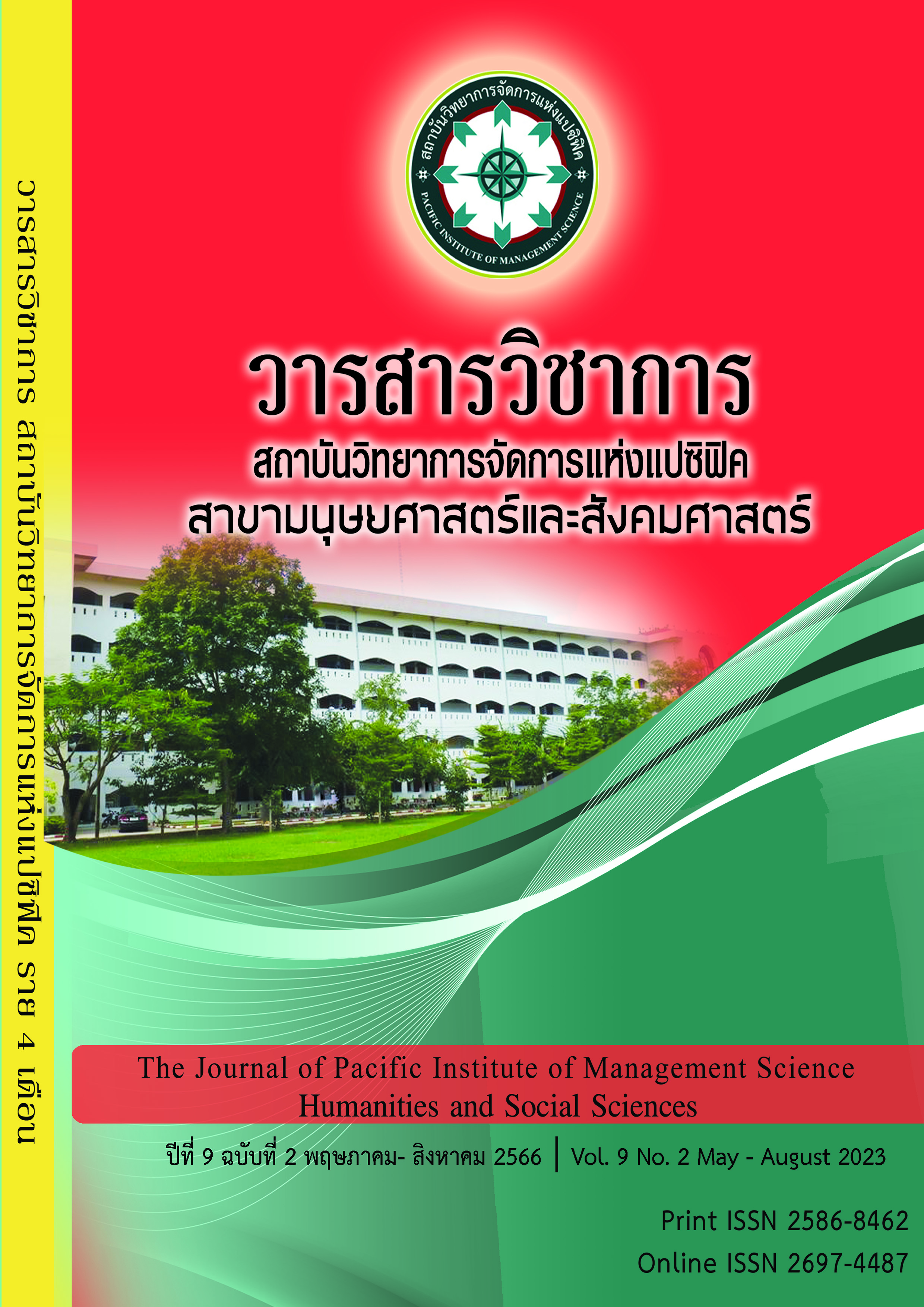Legal Issues relating to Geographical Indications
Keywords:
Regal Issues, Geographical IndicationAbstract
The objective of this research is to study the legal measures on geographical indications through the study of the registration of geographical indications under Thai law and international agreements as well as foreign laws, such as the Paris Convention for the Protection of Industrial Property, the Madrid Agreement for the Repression of False or Deceptive Indications of Source on Goods, the Lisbon Agreement for the Protection of Appellations of Origin and their International Registration, the Agreement on Trade-Related Aspects of Intellectual Property Rights, the Council Regulation No. 510/2006 as well as the Council Regulation No. 1151/2012 and the Singapore Geographical indications Act 2014. In this study, both theoretical concepts and principles of law related to the protection of geographical indications have been studied aiming to find suitable solutions according to Thai legal measures and to promote products using Thai geographical indications for effective protection and to contribute to the development and value addition in preparation for stepping into the global trade competition.
The results of the study show that the principles of Thai legal measures applicable to geographical indication protection are unclear. There is still a lack of principles for fair treatment to all parties and such measures are incapable of completely preventing the confusion among consumers about the geographic origin of the geographical indication. In addition, some measures are considered inflexible and do not meet the minimum standards established by the Trade-Related Aspects of Intellectual Property Rights Agreement (Trade-Related Aspects of Intellectual Property Rights) requiring member states to meet their obligations.
Therefore, the researcher is of the opinion that the relevant Thai laws should be amended, especially the Ministerial Regulation Prescribing List of Specific Goods and Rules and Methods for Use of Similar or Identical Geographical Indication B.E. 2547 (2004) for greater clarity and coverage in terms of determining the conditions for fair treatment for all producers of geographical indications, including adding mechanisms for protection of geographical indications for general commodities. This is to enable Thailand to effectively enforce such measures and to prepare for the expansion of protection of geographical indications at the international level.
References
พระราชบัญญัติคุ้มครองสิ่งบ่งชี้ทางภูมิศาสตร์ พ.ศ. 2546
กรมทรัพย์สินทางปัญญา กระทรวงพาณิชย์ เรื่อง กฎกระทรวงกำหนดรายชื่อประเภทสินค้าเฉพาะอย่างและกำหนดหลักเกณฑ์และวิธีการในการใช้สิ่งบ่งชี้ทางภูมิศาสตร์ที่เหมือนหรือพ้องกัน พ.ศ. 2547
ดำรง ธรรมารักษ์. (2537). ความรู้เบื้องต้นเกี่ยวกับกฎหมายระหว่างประเทศ. กรุงเทพฯ: สำนักพิมพ์จุฬาลงกรณ์มหาวิทยาลัย.
ทวีพฤทธิ์ ศิริศักดิ์บรรจง และคณะ. (2558). รายงานวิจัยฉบับสมบูรณ์ เรื่อง มาตรการกฎหมายสิ่งบ่งชี้ทางภูมิศาสตร์เพื่อปกป้องภูมิปัญญาท้องถิ่น ด้านสินค้าอาหารในประชาคมอาเซียน: บทเรียนสำหรับประเทศไทย. กรุงเทพฯ: สำนักงานเลขาธิการสภาผู้แทนราษฎร.
ยรรยง พวงราช. (2545). เอกสารเพื่อประกอบการพิจารณากฎหมายของสมาชิกรัฐสภาเล่มที่ 3. กรุงเทพฯ: สำนักพิมพ์ศิริโรจน์การพิมพ์.
รัฐชัย สุขรุ่งเรืองรอง (2564). การคุ้มครองสิ่งบ่งชี้ทางภูมิศาสตร์ กรณีที่มีการย้ายถิ่นที่อยู่ของคนในชุมชน. วารสารรัชต์ภาคย์.ปีที่ 15 ฉบับที่ 1 กรกฎาคม-สิงหาคม 2564.
วรวุฒิ โปษกานนท์ และคณะ. (2545). ข้อสังเกตบางประการเกี่ยวกับกฎหมายคุ้มครองสิ่งบ่งชี้ทางภูมิศาสร์. บทบัณฑิต, 58 (มกราคม-มีนาคม).
สัญญา วรรณศรี. (2561). ปัญหาการจำแนกประเภทและระดับการคุ้มครองสิ่งบ่งชี้ทางภูมิศาสตร์. วิทยานิพนธ์นิติศาสตรมหาบัณฑิต, คณะนิติศาสตร์ มหาวิทยาลัยรามคำแหง.
Downloads
Published
Issue
Section
License
Copyright (c) 2023 Pacific Institute of Management Science

This work is licensed under a Creative Commons Attribution-NonCommercial-NoDerivatives 4.0 International License.
บทความที่ได้รับการตีพิมพ์เป็นลิขสิทธิ์ของ สถาบันวิทยาการจัดการแห่งแปซิฟิค
ข้อความที่ปรากฏในบทความแต่ละเรื่องในวารสารวิชาการเล่มนี้เป็นความคิดเห็นส่วนตัวของผู้เขียนแต่ละท่านไม่เกี่ยวข้องกับสถาบันวิทยาการจัดการแห่งแปซิฟิค และคณาจารย์ท่านอื่นๆในสถาบันฯ แต่อย่างใด ความรับผิดชอบองค์ประกอบทั้งหมดของบทความแต่ละเรื่องเป็นของผู้เขียนแต่ละท่าน หากมีความผิดพลาดใดๆ ผู้เขียนแต่ละท่านจะรับผิดชอบบทความของตนเองแต่ผู้เดียว







